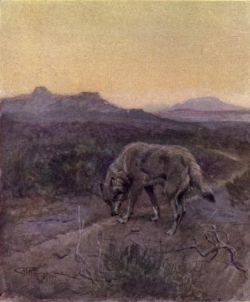I finished four books during this week, as well as one 1920 issue of the pulp magazine The Black Mask.
Books
- Swords and Sorceries: Tales of Heroic Fantasy, Volume 4, ed. by David A. Riley — the fourth anthology in the continuing series, published in June 2022, offering eleven stories of varying interest but overall entertaining enough that I’ll continue to acquire the series (Volume 6 is due out in May 2023); recommended for genre fans.
- The Prisoner of Zenda, by Anthony Hope — the rousing tale in which a man’s close resemblance to a king whose rule is threatened by a usurper offers opportunity to foil the villain’s plans, though perhaps at great personal cost, is an outstanding adventure with a sympathetic hero; highly recommended.
- The Book of Iod, by Henry Kuttner et al., and ed. by Robert M. Price — one of a number of books published by game company Chaosium containing stories in some way connected with H. P. Lovecraft’s Cthulhu Mythos; here most of the stories are by Henry Kuttner, an author better known for his later science fiction and fantasy, but the volume contains also tales by Lin Carter and editor Price, as well as one story Kuttner co-wrote with Robert Bloch; the stories vary in quality and suffer from rather too many similarities across the thirteen, so the book is better approached by spreading out the reading of its contents; recommended for fans of the genre or completists for one or another of the authors herein.
- The Cockeyed Corpse, by Richard S. Prather — a Shell Scott mystery set at a dude ranch, reasonably amusing but weakened somewhat by the fact that the reader can early on spot the explanation for the sinister goings-on and then must wait for the white-haired private eye to figure things out; mildly recommended.
Continuing Reads
- A Laugh a Day Keeps the Doctor Away, by humorist Irvin S. Cobb — a collection of 366 amusing anecdotes published in 1923, which I’ll be reading at the rate of one per day.
- More Heart Throbs — the sequel to the similar Heart Throbs, an anthology of prose and verse selections, often sentimental in nature, submitted by the general public and famous people, published in 1911; I’ll be reading one or more pages (as needed for the selections) per day throughout the year.
- The Book of the Thousand Nights and a Night: A Plain and Literal Translation of the Arabian Nights Entertainments, translated by Sir Richard F. Burton in the late 19th century — I hope to read all ten volumes as well as the six supplemental volumes this year.
- Orlando Innamorato, by Matteo Boiardo, translated by Charles Stanley Ross — I hope to finish this Renaissance Italian epic this year.
Magazine
- The Black Mask, August 1920
Contents:- “The Man Who Was Seven,” by J. Frederic Thorne — a fun novelette about a bank heist and a man who apparently appeared in seven different places at the exact same time, undermined to some extent by the irrelevance of some of the details; mildly recommended.
- “The Summons,” by Henry Altimus — a short story in which a dead man apparently calls for a nurse — or someone — from beyond; the solution to the mystery is not unexpected; not really recommended.
- “The Abandoned House,” by Beulah Poynter — an odd little story in which siblings find a dead man and a woman who tells them the story of the killing … or does she? Mildly recommended.
- “The Face That Stared Back at Blaisdell,” by Edwin Carty Ranck — a short story that could perhaps be classed as horror, as a man meets his doom, it seems, through some sort of psychic connection with a killer; not really recommended.
- “More Deadly Than the Viper,” by Harry C. Hervey, Jr. — a weird story set in Tibet, where an adventurer encounters a sinister woman in a monastery and the threat of the “Valley of Vanishing Men”; mildly recommended.
- “Jim Dickinson’s Head,” by Harold Ward — a short story with a memorable opening that is better than the fairly ordinary tale that follows; mildly recommended.
- “The Triple Murder in Mulberry Bend,” Christopher Hawthorne — another short story, one in which the police receive a letter telling them where to find the victims of the titular murder but are unable to nab the culprit, with an unusual twist in the delivery of the explanation for the mystery and the story’s denouement; not really recommended.
- “The Valley Where Dead Men Live,” by Harold Ward — a ghost story in which specters endlessly repeat their battles in the recently completed First World War, with the story suggestive of spiritualism; mildly recommended.
- “The Strange Story of Martin Colby,” by Ward Sterling — yet another story involving an apparent psychic connection and its aftermath; mildly recommended.
- “Where the Span Splits,” by Sam Hellman — in which a man plans to kill himself to avoid the pain and suffering that come with age, with a twist; not recommended.
- “After Midnight,” by Marthé Neville — a thriller in which the narrator comes to learn the secrets of a friend’s household after a strange murder; perhaps the most entertaining of the stories in this issue, even if fairly standard stuff; recommended.
- “Brothers-of-the-Coast,” by J. C. Kofoed — another story with a twist, in which a man relives a past life as a pirate; not really recommended.
- “The Best New Mystery Books,” by Captain Frank Cunningham — a useful column of brief reviews of books that were new at the time; recommended.

